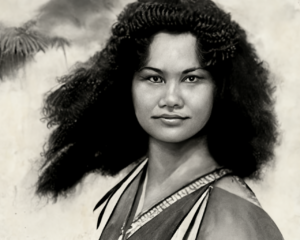
Is it OK To Have Goals When Practicing Ho’oponopono?
There are three kinds of ho’oponopono. The first is the traditional one in which native wisdom keepers (Kahunas) perform a ho’oponopono in order to settle legal matters such as water rights, fishing rights, territorial boundaries, and later this was adapted to be used to resolve disputes within families. It continues to be used on the Hawaiian Islands as a form of family therapy.
The goal of this method was at the first order to settle the dispute in everyday 3D reality, and at the second order to restore participants awareness that all is Divinity and beyond.
The second kind of ho’oponopono is a logical extension of the traditional form. It’s ho’oponopono used as an adjunct to healing (lāʻau, and lomi lomi – the term huna which includes these meanings yet was only applied to Hawaiian healing in 1936).
This method uses massage and herbal practices to effect ‘cures’ whilst recognising that the cause of all illness is to be out of balance with natural balance (pono pono).
The goal of this method at its first order is to make an individual well again, whilst at a second order to do so by restoring their natural affinity with Divinity and beyond, hence ho’oponopono (to make right).

1913 -1992
The third kind of ho’oponopono is a modernised version that was created by Morrnah Nalamaku Simeona and her cousins. It’s a mistake to think that Morrnah modernised ho’oponopono in isolation from her lineage which went back over forty generations of kahuna.
The changes she made to the practice were discussed, and permission was (with some reservations) granted for the modernised version to be revealed. It took many years. The changes weren’t all introduced at once. For this reason, two popular flavours of the modern ho’oponopono are in existence. One resembles the older ho’oponopono and consists of twelve, or even fourteen steps. The second is the prayer (sometimes called the mantra) popularised by Dr. Ihaleakala Hew Len, which consists of the four phrases ‘Thank you, I am sorry, Please forgive me, I love you’.

1939 – 2022
These phrases are translations from Hawaiian thought. Dr. Hew Len knew, for example, that the concepts of forgiveness and sorrow don’t strictly exist within the Hawaiian language. Instead, we have the word Aloha which is generally thought of as the greeting ‘Hello’ yet signifies loving devotional contact which can be experienced as a knock on the head, a jolt in the stomach, or both.

1964 – 2014
So, in a sense the English (and possibly other translations from English, rather than Hawaiian) are ‘softer’ than the Hawaiian original. This kind of difference is why Haleaka Iolani Pule (Aunty Aka) was able to say ‘They (Morrnah, her cousins and lineage) knew that not a lot of people would understand it (ho’oponopono) in its ancient and traditional way. So, they had to adapt it a little bit, and shift, and change it a little in order to enable more people to understand it and go Ohooooooooowww’.
When Dr. Hew Len worked at Hawaii State Hospital (where he used ho’oponopono in order to clean himself of his reactions to the crimes of its inmates who had been convicted of heinous acts and were considered to be insane), he would have used both the longer format ho’oponopono and also his prayer in the original Hawaiian language (because he was a native Hawaiian).

Dr Hew Len is also credited with adding a number of cleaning methods (known as cleaning tools) to those which already existed within ho’oponopono. These included solarised blue water, various fruits and berries, and mental rituals. Whatever ‘additional’ methods he suggested, these interventions were new versions of older traditions. For example, Morrnah Simeona had once suggested mentally dropping giant fizzy tablets in a swimming bath before taking a dip. She was also in the habit of mentally covering moving vehicles (such as aircraft) with rainbows in order to ‘protect’ loved ones. Clearly, the fruits and berries were part of the medical practices which formed the second kind of ho’oponopono discussed above).
The adaptation of ho’oponopono to a Western mind-set has some cost, however. Westerners tend to believe that they have a right to certain benefits in life. Yet, as Gavin Fairbairn (Professor Emeritus in Ethics and Language – Leeds Beckett University) once asked me quite simply, ‘What is a right?’
Traditional people, of the other hand, consider that they have responsibilities to both their ancestors and also to future generations, as well as their environment such as the planet and the stars (to which they consider that they belong).
This difference has made an impact through ‘The Law of Attraction’. This differs from traditional forms of ho’oponopono because it aims to provide you with specifically imagined objects. Since anything imagined is likely to be based upon past memories arising from feelings of lack, such objects will only provide temporary fulfilment. As such they are a distraction from the main purpose of ho’oponopono which is to restore a balance between your conscious awareness and Divine consciousness.
On its own, The Law of Attraction is solely aimed at first order change (to make you healthy, to provide you with a better car, to find a life partner – all the regular tropes of Western civilization).
Ho’oponopono, on the other hand means to restore, mend, or correct (ho) the (o’) rightness (pono) pertaining to Divinity (signified by the second pono).
Can you do both? The answer must be an unequivocal ‘No’. However, that doesn’t mean that you must live a life of poverty, and wear rags. It means that by cleaning your memories, karmic-data is released and replaced with the white light of Divinity. In turn, you will attract whatever is needed for the next steps on an apparent journey.
You begin to love your old vehicle as a family friend, and your house as a living being (rather than something to be owned). In this way, both become assets in unimaginable ways (because they are loving you). As you become more and more loving, you receive more and more love wherever you go. Eventually there is only love, and you realise that there are no internal and external worlds – everything is simply loving.
Dr Hew Len often remarked, ‘My sole goal is to return myself to Divinity’.


You May Also Like

Adventures Beyond The Known: Ho’oponopono and the Quest for Ultimate Freedom

Ho’oponopono And Disincarnate Spirits
